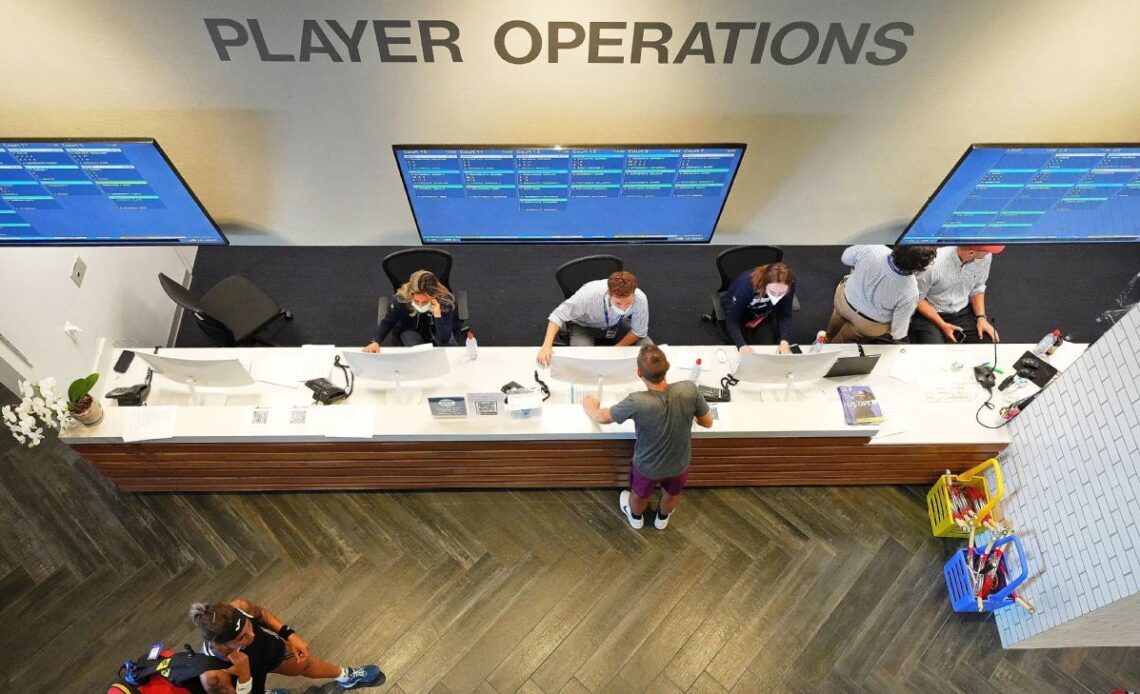NEW YORK — Ben Shapiro’s phone won’t stop buzzing.
As a coordinator for professional tennis operations for the USTA and one of three people leading the US Open’s practice-court scheduling, he can’t go more than a few minutes — seconds sometimes — without a player or a coach reaching out. Phone calls, texts, WhatsApp messages. Everyone is looking to secure a practice time, or complain about the one they already have. One unhappy coach called him four times within a minute.
“Anytime I try and run and eat something, or even just quickly go to the bathroom, I miss so much,” Shapiro said. “It’s constant, 24/7. I go to bed and we’re still going, and I wake up and I’ve missed so many [calls and messages].”
On Sunday, the day before the main draw is slated to begin at the US Open, the requests are never-ending.
With an office and scheduling desk located in the players’ area inside of Arthur Ashe Stadium, there is a palpable combination of optimism and nervous energy as the first round approaches. Players and their coaches rush around with their rackets and laundry bags, making last-minute preparations.
Amid the chaos, four employees sit behind their computers and calmly assist the steady stream of players and their coaches with booking practice courts or picking up balls for their session that day. In theory, it sounds simple enough — find out when a player wants to practice and put them on the schedule — however, it’s anything but.
What the players and coaches don’t see: the complicated spreadsheet, complete with color codes and symbols, which contains the practice-court schedule for 256 players — every single one in the main draw. Aside from the sheer number of people, every person has specific wants and needs, and there are only a finite amount of courts. There are 17 practice courts, five directly on the grounds and 12 in Flushing Meadows Corona Park, and three indoor practice courts, as well as courts available for use at nearby Randall’s Island.
“It’s a very intricate puzzle,” Shapiro said. “And every booking that we put in there, there’s then five domino effects that might happen that we have to think about. So it’s almost like playing chess.”
If a top player wants to make a last-minute change, or if someone gets stuck in traffic, or if someone just doesn’t read their time correctly, everything can get upended. Shapiro, who leads the operation with Joshua Bramblett and Haley Wallace, will often be the one…
Click Here to Read the Full Original Article at www.espn.com – TENNIS…

